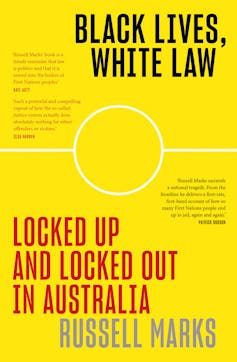The criminal legal system does not deliver justice for First Nations people, says a new book
- Written by Chris Cunneen, Professor of Criminology, University of Technology Sydney

This article contains information on deaths in custody and the violence experienced by First Nations people in their encounters with the Australian carceral system. It also contains references to and the names of people who are now deceased.
Early in Russell Marks’ book, Black Lives, White Law[1], he tells us that while he was writing it, at least 37 First Nations people died in Australia’s criminal justice system.
During the time I’ve been writing this review, we have listened to the coroner’s inquiry into the killing of[2] Warlpiri teenager Kumanjayi Walker and seen (again) the racism and violence of police: from casual text messages[3] commending physical assaults, to the use of deadly force against a young man, when there were multiple other options available.
And then came the death of Noongar 15-year-old Cassius Turvey who was fatally attacked in Perth last month. The immediate police response was to evade claims of racism in his alleged murder. “It may be a case of being in the wrong place at the wrong time,” speculated Western Australia’s police commissioner, saying he was “not operating on any principles of racism or motivation at this point”.
Review: Black Lives, White Law: Locked Up and Locked Out in Australia – Russell Marks (La Trobe University Press)

















